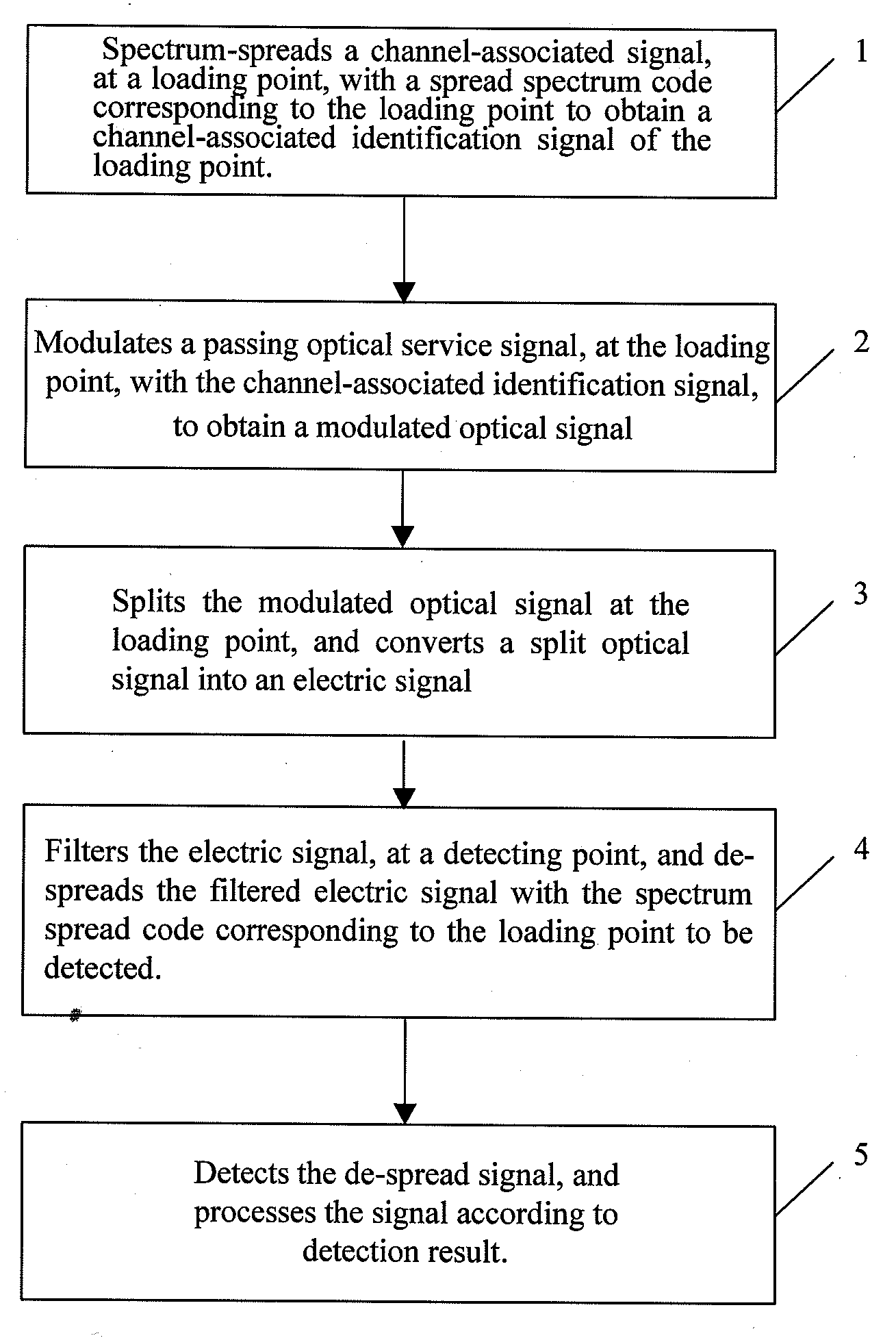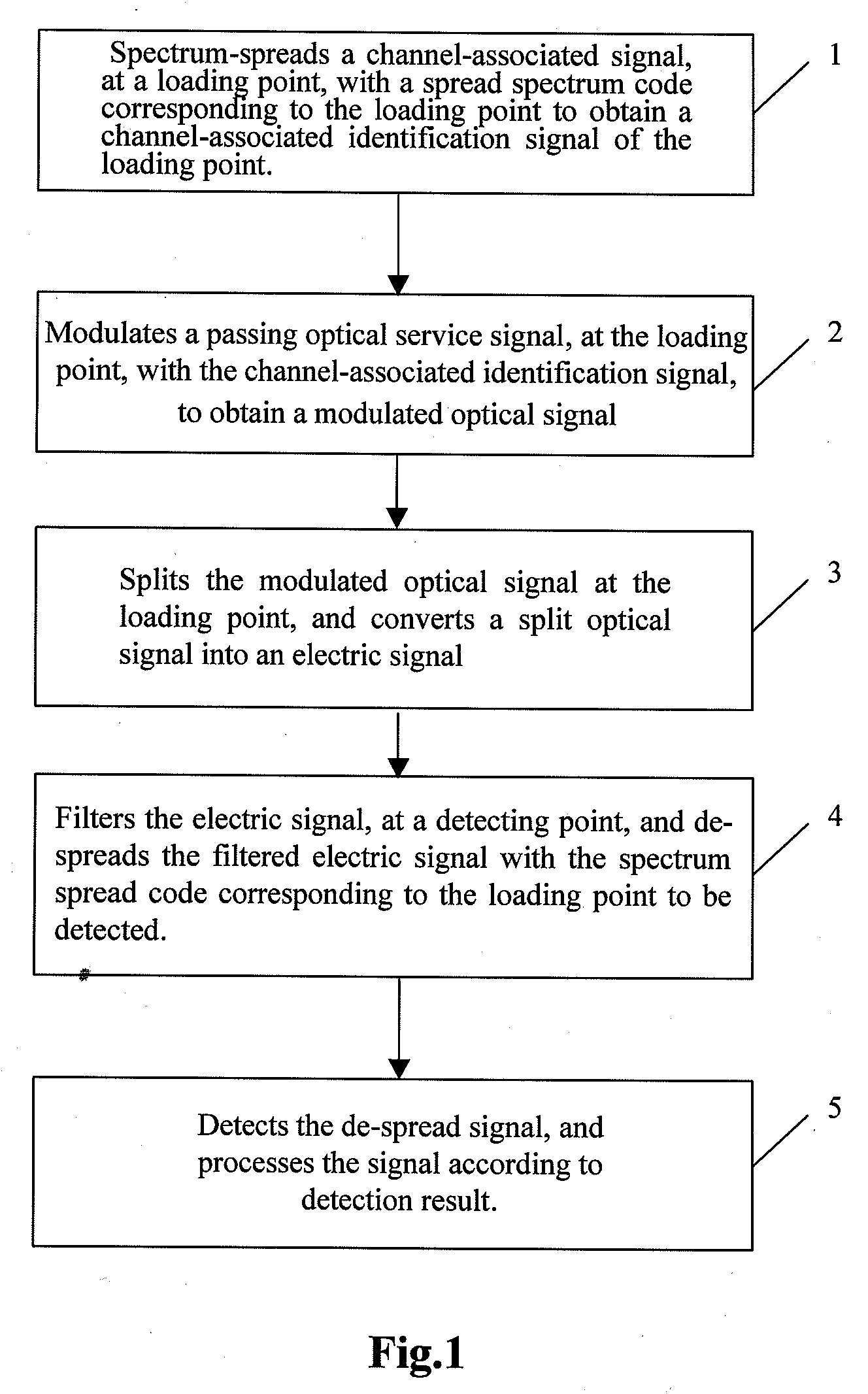Method and apparatus for loading, detecting, and monitoring channel-associated optical signals
a channel-associated identification and channel-associated technology, applied in the field of optical communication, can solve the problems of not taking appropriate measures, difficult to construct a telecommunication-level optical transmission network that can be comparable, and cannot realize supervisory control over the quality or performance of optical signals, so as to reduce the power spectrum density reduce the interference of channel-associated identification signals, and less interference with optical service signals
- Summary
- Abstract
- Description
- Claims
- Application Information
AI Technical Summary
Benefits of technology
Problems solved by technology
Method used
Image
Examples
Embodiment Construction
[0030]A method for monitoring a channel-associated optical signal according to an embodiment of the present invention, as shown in FIG. 1, includes the following steps:
[0031]A: Loading
[0032]Step 1: A loading point spectrum-spreads the channel-associated signal, with a spread spectrum code corresponding to the loading point, to obtain a channel-associated identification signal of the loading point;
[0033]Step 2: The loading point modulate a passing optical service signal, with the channel-associated identification signal of the loading point, to obtain a modulated optical signal;
[0034]B: Detecting
[0035]Step 3: A detecting point splits the modulated optical signal, and converts a split optical signal into an electric signal;
[0036]Step 4: The detecting point filters the electric signal, and de-spreads the filtered electric signal with the spread spectrum code corresponding to the loading point to be detected by the detecting point;
[0037]Step 5: The detecting point detects the de-spread ...
PUM
 Login to View More
Login to View More Abstract
Description
Claims
Application Information
 Login to View More
Login to View More - R&D
- Intellectual Property
- Life Sciences
- Materials
- Tech Scout
- Unparalleled Data Quality
- Higher Quality Content
- 60% Fewer Hallucinations
Browse by: Latest US Patents, China's latest patents, Technical Efficacy Thesaurus, Application Domain, Technology Topic, Popular Technical Reports.
© 2025 PatSnap. All rights reserved.Legal|Privacy policy|Modern Slavery Act Transparency Statement|Sitemap|About US| Contact US: help@patsnap.com



